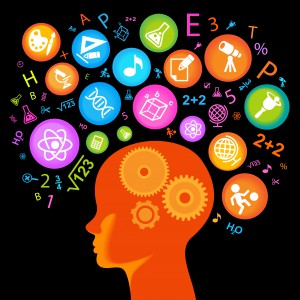 The Internet of Things holds fascinating possibilities. Connected homes, better healthcare, proactive equipment maintenance, smarter shopping, contextual customer service, and the list goes on. In Thingalytics, Dr. John Bates provides very interesting examples from all walks of live about how the phenomenon of connected things is poised to change how we live our lives and do business. It’s a must read book for anyone interested in the Internet of Things.
The Internet of Things holds fascinating possibilities. Connected homes, better healthcare, proactive equipment maintenance, smarter shopping, contextual customer service, and the list goes on. In Thingalytics, Dr. John Bates provides very interesting examples from all walks of live about how the phenomenon of connected things is poised to change how we live our lives and do business. It’s a must read book for anyone interested in the Internet of Things.
More and more devices – cars, home appliances, medical devices, industrial equipment etc. – are being enabled to transmit data. This data is being collected and analyzed to derive correlations and help make the many interesting and even lifesaving use cases possible. Wouldn’t we all want to see healthcare costs reduce because the machines are able to exchange information and do what many people manually did before in a fraction of the time needed before? Won’t it be great to be reminded by a virtual doctor that we need to follow the plan & instructions better? How about our ovens taking over a complicated recipe, and our cars driving us in full comfort without us having to even key in the destination?
There are so many fascinating use cases possible in every walk of life. A lot of this intelligence is about rules: if this then do that. We build more complicated rules as the amount of data and the decision variables increase. As we mature, we can also move on to predictive analytics by deriving inferences about the future from what happened before, which means more rules and more assumptions. And then we look for more data to make those assumptions better.
Such proactive inference making will definitely make machines more responsive and interactions more automatic. But as we embark on realizing these possibilities, there are 3 aspects that we must keep in mind as we design the use cases on this exciting journey:
Human aspects:
Are we going to judge others? Rules are not enough to judge others. A doctor might monitor how regularly you took the pills, or how many appointment you kept. That’s one-way record keeping. You might fall short of her expectations – perhaps she prescribed medication that you felt was too strong with too many side effects and you were seeking other opinions or treatments. Meanwhile the rules and data in the systems may show that your follow ups or care was not adequate. Similar situations arise when we monitor use of TV, our diets, our work habits and discipline, or our hygiene. Where do we stop before we start judging incorrectly? And assigning labels that do more harm than good. In a trigger happy world, what is a good trade-off, and will people stop when they must?
Beyond data analytics:
The idea of analyzing data, visualizing it and deriving inferences is exciting. Those insights must also be channeled properly into business processes if they are to result in good solutions. Allowing access to and interpreting the machine data is the tip of the iceberg. The real challenge is in feeding those insights into the rest of the business processes to take tangible action. For example, automatic equipment service is half optimal when a technician is alerted to a problem. It’s not really complete unless we combine that data with routing, scheduling, customer history, severity and inventory information. Similarly, being able to identify a customer using their mobile app, and showing appropriate discounts on the store display is not really awesome if the customer just bought that item last week. An entire business process is enabled through integration of related technology systems and data sources. For that reason, the Internet of Things must be looked at as an IT and business process strategy problem too, instead of getting carried away by the fascinating tip of the iceberg.
Beyond connected things
At some point, connected things of a corporation will not be enough. Connected things are essentially solving problems in a silo because a provider only meets a partial set of the overall customer needs. What customers will really need are connected providers. When a washing machine breaks, a technician comes over, but how about if the heating system needs service too. The onus is on the customer to manage these schedules today. This same concept can be carried over to various consumer scenarios – shopping, travel, fitness etc. And even to industrial scenarios like demand planning, equipment maintenance, commerce etc. It will be great to have providers talk to each other to reduce customer effort.
The Internet of Things is here to stay. It’s evolving and it is fascinating. Commerce, customer experience and service are all going to be linked together like never before.
Meanwhile, I’m waiting for the next evolution – a platform that will help me monetize the use of my data that everyone is taking for granted!
Photo credit: charlywkarl / Foter / CC BY-ND
This post is based on the 5 principles outlined in my book Dancing The Digital Tune: The 5 Principles of Competing in a Digital World.
